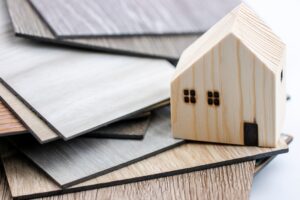- 3 min reading time
When buildings make you ill: All about sick building syndrome
Sick Building Syndrome (SBS) is an increasingly relevant issue in our modern world where we spend much of our time indoors. It affects not only our health, but also our perception of comfort and well-being. This article is dedicated to understanding SBS, its symptoms, causes and solutions in relation to air quality and the presence of indoor toxins and associated diseases.
What is sick building syndrome?
Sick building syndrome refers to a range of symptoms that people experience in certain buildings or indoor environments. It is characterized by complaints such as headaches, fatigue and dizziness, which are often exacerbated by indoor toxins such as chemical and biological contaminants in the air. These symptoms, exacerbated by exposure to indoor toxins, occur when the person is in a particular building and improve or disappear as soon as fresh air is inhaled.
Common symptoms of sick building syndrome
The symptoms of sick building syndrome vary, but can have a significant impact on quality of life. Typical signs of the disease include:
- Respiratory symptoms: Sneezing, coughing, nasal congestion, sore throat and difficulty breathing are common.
- Eye, skin and mucous membrane irritation: These include dry, itchy or watery eyes, skin rashes and dry, irritated mucous membranes.
- Neurological signs: Headaches, dizziness, fatigue and difficulty concentrating are common.
- General malaise: Symptoms such as nausea, general discomfort and lethargy may also occur.
The severity of these signs and perceived illness can vary from person to person and often depends on the duration and intensity of exposure to the triggering factors and indoor toxins in the building.
Causes of sick building syndrome
The causes of sick building syndrome (SBS) are varied and often relate to indoor air quality. In addition to poor ventilation, chemical contaminants and indoor toxins from building materials, furniture and cleaning products as well as biological contaminants such as mold and pollen can contribute to the deterioration of air quality. These factors can lead to a range of health complaints. Psychological factors, such as stress in the workplace, can also increase the risk of suffering from this disease. SBS is often diagnosed through a combination of the patient's medical history, description of symptoms and assessment of environmental conditions.
How is sick building syndrome diagnosed?
Recognizing sick building syndrome is often a major hurdle, as sufferers often do not know exactly what is wrong with them - let alone associate their symptoms with a building. Therefore, the diagnosis of sick building syndrome is rather difficult and complex and is usually based on a combination of symptom analysis, checking the environment and ruling out other conditions. Doctors consider the specific symptoms and signs of the patient's illness, the time and place of their onset, and any improvement in symptoms after leaving the building or indoor environment. A thorough examination of the building environment, including air quality measurements and pollutant testing, can be performed to identify potential causes. As there are no specific tests for SBS, a comprehensive assessment by professionals is often required to make the correct diagnosis based on the symptoms experienced.
Prevention and measures
Various measures are effective in preventing and combating sick building syndrome:
- Improved ventilation: Regular ventilation, use of efficient ventilation systems.
- Humidity control: avoid mold by maintaining appropriate humidity levels.
- Use of low-emission materials: selection of building materials and furniture with a low VOC content.
- Regular cleaning and maintenance: Cleaning of heating, ventilation and air conditioning systems.
- Optimizing the indoor climate: setting pleasant temperatures and lighting.
- Inclusion of plants: Plants such as the monocot, hemp, green lily or dragon tree can significantly improve air quality as they specifically reduce pollutants.
- Awareness and training of employees: Information about SBS and its prevention.
These measures help to create a healthier environment, which can both reduce the symptoms of sick building syndrome and improve general well-being.
Sick building syndrome in the working environment
In the work environment, sick building syndrome is particularly relevant as it can affect the health and productivity of employees. Factors such as poor air quality, inadequate ventilation, excessive stress and unfavorable working conditions can exacerbate SBS symptoms. Employers should therefore take preventative measures to create a healthy working environment. This includes regular inspection and maintenance of building facilities, improving air quality and promoting a positive working atmosphere. Stress reduction measures and the creation of ergonomic workstations can also help to reduce SBS symptoms.
Sick building syndrome in residential buildings
Sick building syndrome can also occur in residential buildings and affect quality of life. The causes are similar to those in the working environment, but include specific aspects of living, such as high concentrations of pollutants and indoor toxins from furniture, building materials and cleaning products. Mold growth due to moisture and poor ventilation is also a common problem. Residents should ensure regular ventilation, humidity control and the use of low-pollutant materials. The inclusion of air-purifying plants (see also "Prevention and measures") can also be helpful in improving air quality.
Conclusion and recommendations
In summary, you have now gained a more comprehensive understanding of sick building syndrome, including its symptoms, causes, diagnostic methods and preventative measures. It is important that if you suspect SBS, you closely observe the symptoms and investigate whether they worsen or improve in specific buildings. If symptoms persist, seek professional medical advice and have the building environment checked by experts. Preventative measures such as improved ventilation, use of low-emission materials and maintaining good air quality in both work and home environments are crucial to protect your health and prevent sick building syndrome.




